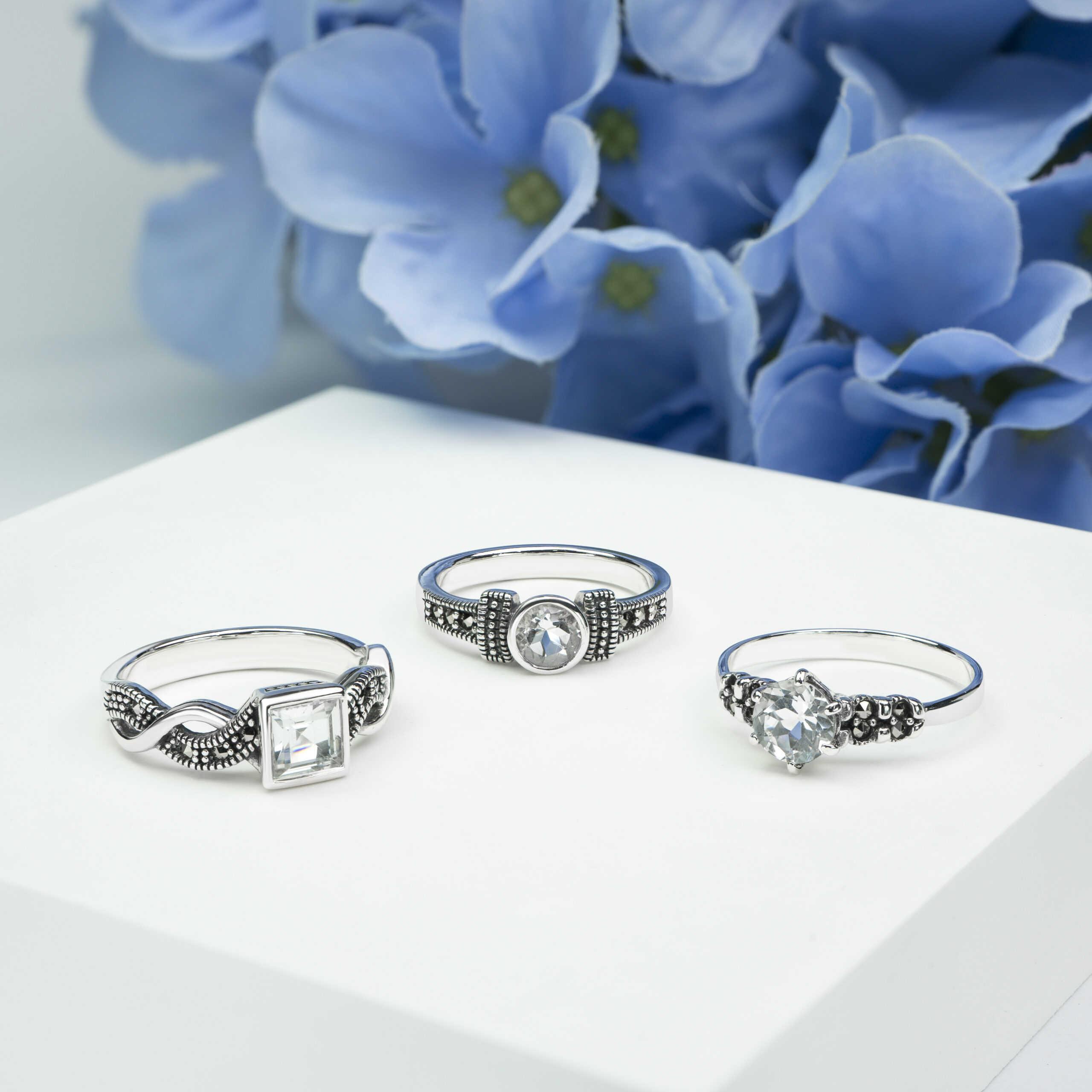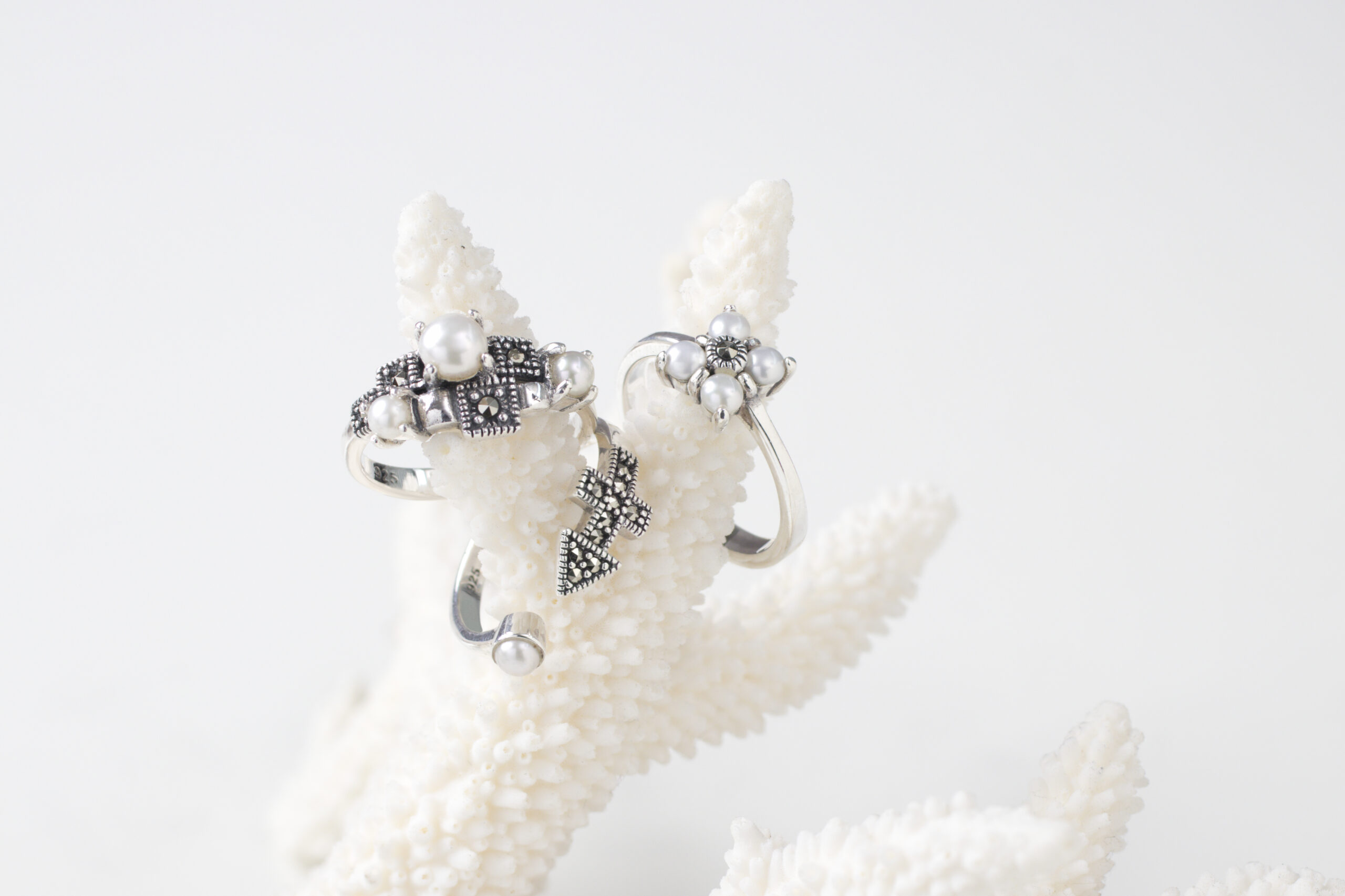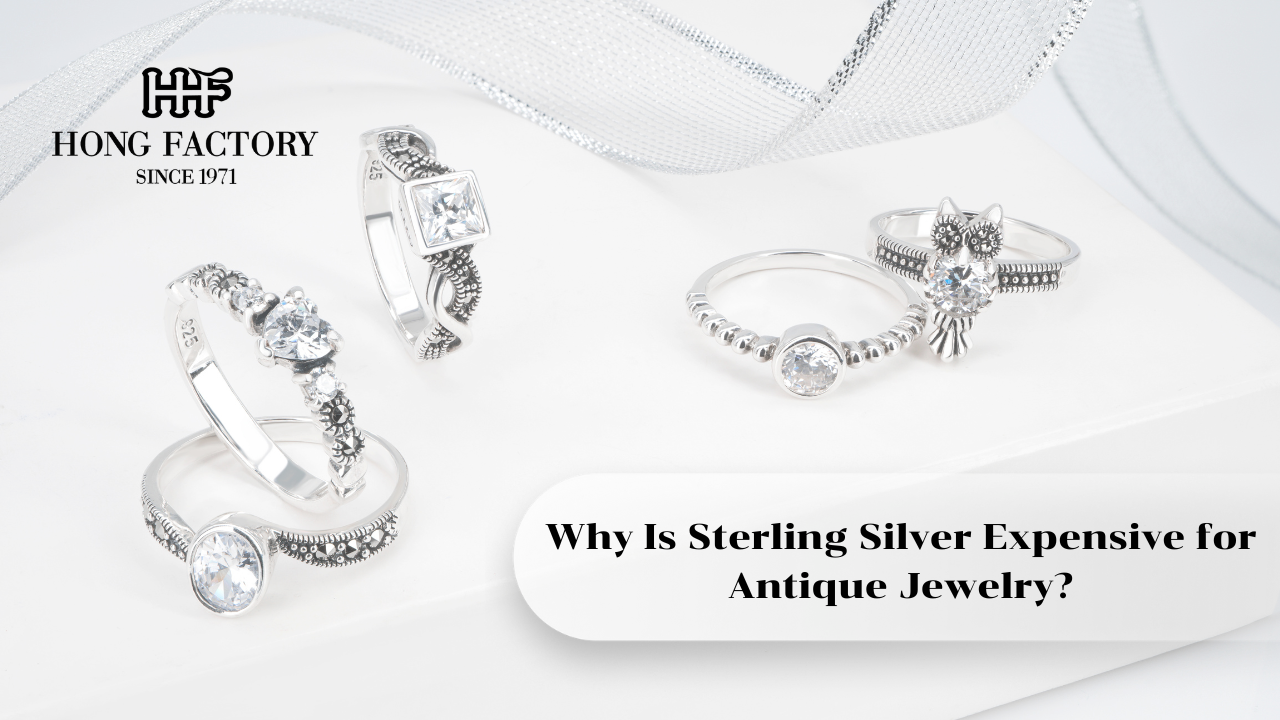Sterling silver has long been admired for its shine, elegance, and timeless appeal. While gold and platinum are often seen as the ultimate symbols of luxury, sterling silver holds its own as a valuable and desirable metal. Many people wonder why sterling silver can be expensive despite being less costly than gold. The answer lies in its quality, craftsmanship, and lasting value. Marcasite jewelry
What Is Sterling Silver?

Sterling silver is composed of 92.5% pure silver and 7.5% copper or other strengthening metals. This composition gives the metal both strength and durability while retaining its beautiful luster. Authentic sterling silver jewelry is marked with the hallmark “925,” signifying its purity.
Unlike plated jewelry or base metals such as brass and stainless steel, sterling silver is a genuine precious metal. Its brilliance, workability, and ability to hold gemstones securely make it a premium choice in fine jewelry manufacturing.
Is Sterling Silver Expensive?
The question “Is Sterling Silver Expensive” often arises because it sits between luxury metals like gold and affordable alternatives like stainless steel. While not as costly as gold, sterling silver remains more expensive than many common metals for several reasons.
Key factors that contribute to its value include:
- High purity content: With 92.5% pure silver, it has intrinsic worth.
- Skilled craftsmanship: Jewelry made from sterling silver often involves detailed hand-finishing and gemstone setting.
- Durability and longevity: When cared for properly, sterling silver lasts for generations.
Aesthetic appeal: Its natural shine rivals white gold and platinum, offering luxury at a more accessible price. - Hypoallergenic quality: It’s safe for most skin types, unlike nickel or brass.
These qualities elevate sterling silver above cheaper jewelry materials and justify its price.
Why Sterling Silver Costs More Than Other Common Metals
Although sterling silver is less expensive than gold, it still requires significant resources and skill to produce. The mining, refining, and alloying processes add to its overall cost. Unlike costume jewelry or low-grade alloys, sterling silver holds real metal value.
When compared to metals like stainless steel or brass, the difference becomes clear:
- Stainless steel is tough but lacks the prestige and intrinsic value of precious metals.
- Brass tarnishes quickly and may cause skin irritation.
- Silver-plated jewelry wears off over time, revealing the base metal beneath.
Sterling silver, on the other hand, maintains its integrity, beauty, and market value.
The Role of Craftsmanship
Much of sterling silver’s cost also comes from the artistry behind it. Jewelers often handcraft each piece, using precise techniques such as engraving, stone setting, and polishing. The level of craftsmanship impacts the final price, as quality silver jewelry requires time, experience, and attention to detail.
Pieces with intricate patterns, embedded gemstones, or custom finishes demand even higher skill levels. This human touch ensures that each creation is unique and of lasting quality.
Sterling Silver vs. Gold: The True Comparison

Gold and sterling silver are both precious metals, but their pricing structures differ. Gold is rarer and heavier, which contributes to its higher market value. However, sterling silver offers:
- A similar aesthetic appeal at a fraction of gold’s cost.
- Versatility in both casual and formal jewelry designs.
- Lower maintenance requirements compared to plated or mixed metals.
While gold remains an investment metal, sterling silver delivers luxury without excessive cost. Its affordability makes it ideal for both daily wear and special occasions.
Longevity and Maintenance
Another reason sterling silver is valuable is its longevity. With proper care such as regular polishing and storage away from moisture it can last a lifetime. Even if tarnish occurs, it can easily be cleaned and restored to its original shine.
In contrast, gold-plated or costume jewelry often deteriorates over time, losing both its appearance and value. Sterling silver’s ability to be repaired, resized, or refinished adds to its worth.
Why Consumers Choose Sterling Silver
People appreciate sterling silver for many reasons beyond cost:
- It offers the prestige of a precious metal without the high expense of gold.
- It’s durable enough for daily wear.
- It complements a wide range of gemstones and fashion styles.
- It carries sentimental and artistic value, often passed down as heirlooms.
This balance of beauty, value, and practicality makes sterling silver an enduring favorite among jewelers and consumers alike.
Sterling silver may be less expensive than gold, but it is by no means cheap. Its purity, craftsmanship, and longevity give it genuine worth. The combination of elegance, durability, and affordability makes it a timeless choice for those who appreciate fine jewelry.
So, while gold may command a higher market price, sterling silver continues to hold a special place in the jewelry world proving that true value isn’t just about cost, but about beauty, quality, and the craftsmanship behind every piece.
